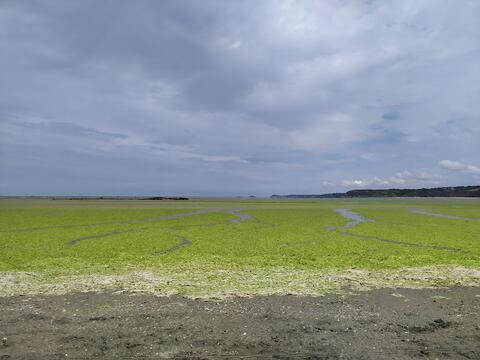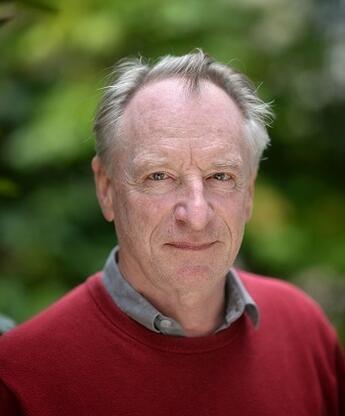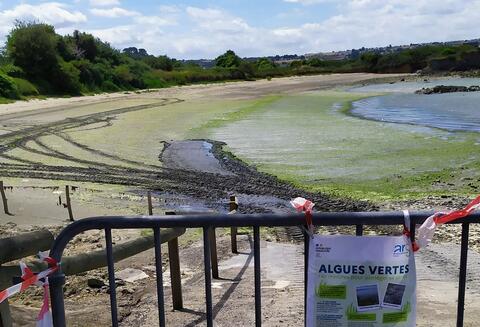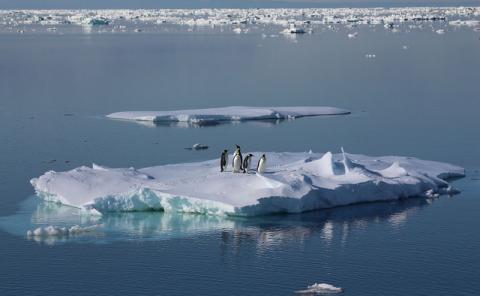
The environmental and health risks related to green algae
To coincide with the release of the film Les Algues vertes, directed by Pierre Jolivet, Dominique Davoult, Professor of Biological Oceanography at the Roscoff Marine Station, sheds light on the green tides that ravage more and more of Brittany's coasts every year.

Deputy Director of the Adaptation & Diversity in the Marine Environment joint research unit, and co-leader of the Edyco team at the Roscoff Marine Station, Dominique Davoult studies the functioning of ecosystems where seaweed is produced and harvested. Editor-in-chief of the Cahiers de biologie marine, he also works with the Comité régional des pêches de Bretagne and harvesters' unions to ensure that current regulations allow sustainable harvesting of these aquatic plants.
In some coastal areas, the excessive growth of green algae is leading to green shores. What is the cause of this proliferation?
Dominique Davoult : Green algae develop due to a combination of three main factors: shallow, enclosed bays with little current, favorable weather conditions (mild temperatures and sunshine) and the presence of excess nitrates in the water. Opportunistic, they are able to grow much faster than other algae species when these conditions are met.
On certain beaches, they are systematically brought in by tidal currents and storms. The places where they wash up and accumulate on the coast from spring onwards become unliveable in summer when they turn white and start to decompose with the sun's rays and heat.
What are the risks of green shores?
D. D. : Green algae are an essential part of the Breton marine ecosystem. In May and June, they are even sought-after, like other seaweeds, to be harvested at low tide and used in many industrial sectors, such as cosmetics and food.
But their excessive proliferation has harmful consequences for the environment and public health. On the scale of Brittany, the enormous concentrations of algae that decompose in summer make the environment hostile for many species, particularly those living in the first few centimetres below the surface.
Green tides also pose a public health problem. While green algae is not dangerous to health when it is at sea or recently deposited on the beach in small quantities, when it decomposes in the sun, it produces gases that are dangerous to humans and animals.

Plage d'algues vertes
The putrefaction of algae forms a crust under the effect of the sun, and after 24 to 48 hours in warm weather, the decomposing algae ferment produces hydrogen sulfide (H2S), a potentially lethal gas. The acute effects of inhaling this toxic gas range from simple discomfort to severe malaise, even cardiac arrest in extreme cases. The risk depends on the quantity of gas released and the proximity of the source, particularly for animals and children who are closer to the ground. The deaths in 2011 of 36 wild boar with high levels of H2S in the Bay of Saint-Brieuc, and other accidents involving green algae in recent years, are no Breton legend.
What measures are being put in place to limit these risks?
D. D. :To reduce health risks, seaweed washed up on beaches is systematically collected. They are then stored in depots where they are dried before being incinerated. Seaweed can also be recycled to produce energy in large-scale methanization plants. But this is a bad idea, as cleaning beaches with tractors and collecting surface sand damages the natural environment and upsets the ecosystem. The other problem is that as soon as we build huge methanizers fed by green algae, we create a need for green algae to produce methane.
A less problematic solution would be for each farm to have a small methane plant to produce methane and energy directly from the manure. This would not only prevent nitrates from entering rivers and watersheds and running off into the sea, but also make the most of the inconvenience caused by slurry.
How can we combat the spread of these algae in the long term?
D. D. :To provide a lasting solution to the problem of green tides, it is essential to control the factors that encourage the proliferation of algae, in particular by limiting excessive inputs of nitrates, mainly from agricultural effluent and livestock rearing.
In Brittany, pig and chicken farms are much larger than in other regions. Even if individual farmers have begun to change their practices, notably by limiting the leakage of slurry into the soil and rivers, they remain prisoners of the intensive farming system. It is therefore essential that the State takes up this issue and encourages environmentally virtuous practices. Unfortunately, this is not easy, given the conflicts of interest that exist between tourism, fishing, agriculture and environmental protection.
How long will it take for these measures to produce tangible results?
D. D. : If the nitrates reaching the coastal environment were completely eliminated, it would take at least 10 years to return to a normal situation. Algae are self-sustaining: as they decompose, they release their own nitrates. Even if they seem to disappear in winter, they remain hidden in areas where they can develop. And when conditions become favorable again the following spring, they'll still grow in quantity even if nitrate concentrations drop. Little by little, they will regress, but it will still take years for the green shores to disappear.


